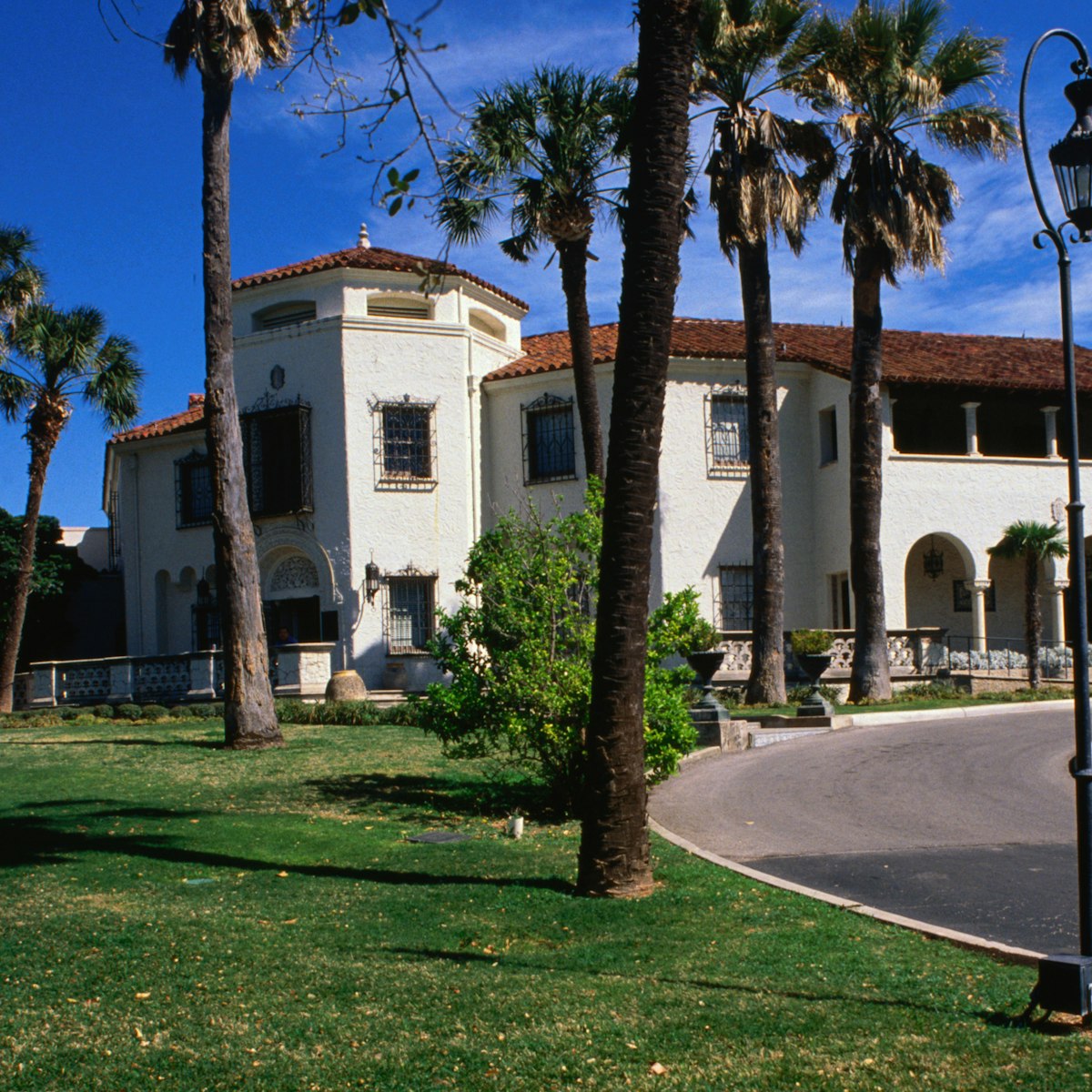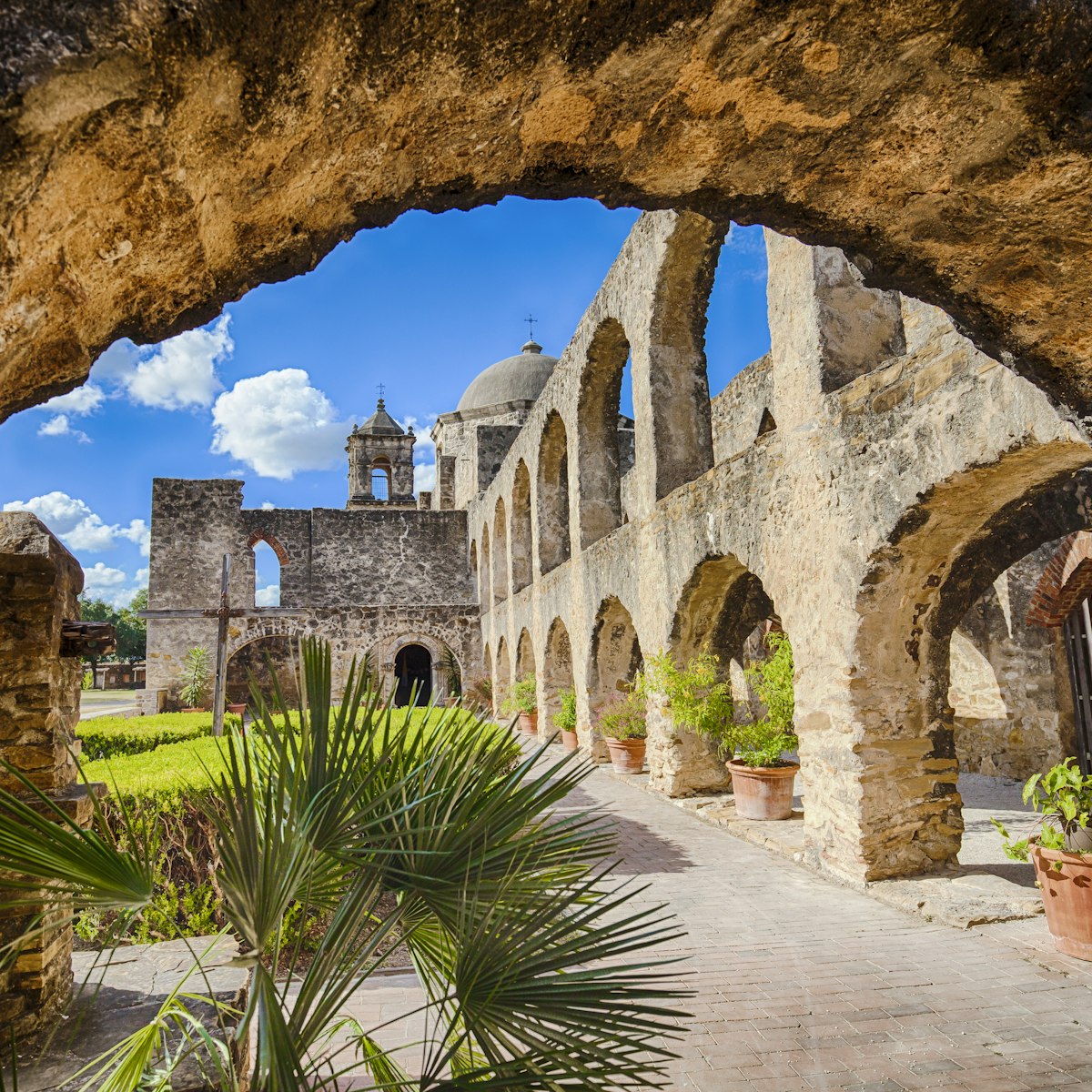For proud Texans, the much-fabled Alamo, entered freely off San Antonio’s central plaza, is not so much a tourist attraction as a place of pilgrimage. Many visitors get downright dewy-eyed as they explore the site of the 1836 siege, in which a few hundred revolutionaries, including Davy Crockett, William Travis and James Bowie, died defending the fort against thousands of Mexican troops.
Built as a mission church from 1755 onwards, the main building is now known as the¬ÝShrine. Beyond that, various exhibition areas in the Alamo Exhibit tell substantially the same story of the Battle of the Alamo ‚Äì not that historians entirely agree on the details ‚Äì in different ways. Thus living-history enactors perform in the Cavalry Courtyard, while there‚Äôs a more traditional museum in the Long Barrack, originally a residence for the Spanish priests and later a hospital for Mexican and Texan troops. A 17-minute film provides another perspective on the battle, and makes an excellent opportunity to escape the heat.
The Battle of the Alamo
It's hard to tell the story of the Battle of the Alamo. There's hot debate about the number of defenders and of Mexican troops and casualties, among many other details. Objective, first-hand accounts have been, to date, impossible to find.
It is generally agreed that on February 23, 1836, Mexican general Antonio L√≥pez de Santa Anna led anywhere from 2500 to 5000 Mexican troops in an attack against the Alamo. The 160 or so men inside the fortress included James Bowie (of Bowie-knife fame), who was in command of the Alamo until pneumonia rendered him too sick; William B Travis, who took command of the troops after Bowie's incapacity; and perhaps most famous of all, David Crockett, called "Davy"¬Ýby everyone. Crockett, a three-time US congressman from Tennessee with infamous taste in headgear, first gained fame as a frontiersman and then for his public arguments with President Andrew Jackson over the latter's murderous campaigns of Native American "removal"¬Ýin the southeastern USA. However, less is known about the African Americans, enslaved by Bowie and Travis, who fought alongside them during the battle and were two of the only male survivors.
Travis dispatched a now-famous letter to other revolutionaries pleading for reinforcements, saying that his men would not stand down under any circumstances ‚Äì his call was for "victory or death."¬ÝBecause of slow communications, the only reinforcements that arrived in time were a group of about 30 men from Gonzales, Texas, bringing the total number of Alamo defenders up to 189 ‚Äì at least according to literature from the Daughters of the Republic of Texas (DRT), which lists the names of all but one, an unidentified African American man.
Santa Anna's troops pounded the Alamo for 13 days before retaking it. Mexican losses were devastating; estimates run as low as 1000 and as high as 2000. When the Alamo was finally recaptured, the advancing troops executed almost all of the surviving defenders. The few who were spared¬Ýwere interrogated and released.
Tickets and tours
Tickets to the church are free, but ¬Ýin advance. To explore further, you'll need to either join a one-hour guided tour or purchase the , a 45-minute self-guided tour that brings the story of the Alamo to life. This will also give you access to the , which includes¬Ýthe world's largest private collection of Alamo memorabilia, in 2014.









